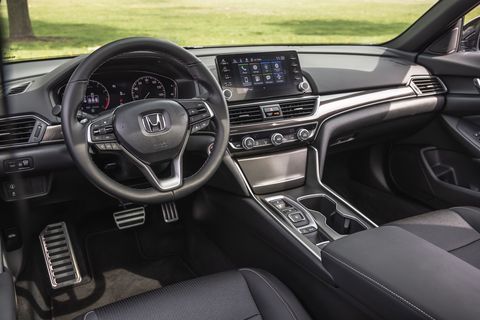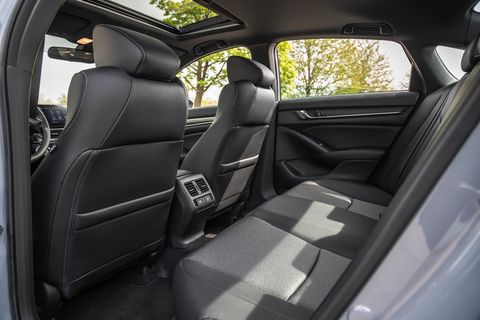2021 Honda Accord Sport 2.0 t
2021 Honda Accord Sport 2.0 t: A powerful engine, a lean curb weight, and a nice price make this the sweet spot of Honda’s Accord lineup.

Finding a Car
And having realistic buying expectations, you can find the classic car of your dreams.
2021 Honda Accord Sport 2.0 t
Determine what you’ll be using the classic car for.
Choose a model.
Join an owner’s club.
They may be able to help you determine what to buy and what to avoid.
- Look at Practical Classics or Classic & Sports Car magazines for lists of owner’s clubs.
2021 Honda Accord Sport 2.0 t
Look online.
There are many websites that sell classic cars.
As with any online purchases, be sure to exercise caution when shopping online.
Try to see the car in person before buying it whenever possible.
- Before buying a car from a website, check reviews of the website through independent organizations such as Consumer Reports or the Better Business Bureau.
- If a deal feels shady or too good to be true, look elsewhere; many scams happen in online sales, and you don’t want to risk making a mistake with a purchase of this magnitude.
Look at many different cars.
Plan your budget ahead of time.
You don’t want to enjoy your car but lose your house!
- To plan a budget, look at your monthly income and expenses and determine how much you have leftover. Take into account money you have in savings and find a reasonable budget that won’t require you to miss out on other important parts of life, like eating, for example!
Look for rare cars.
It is very difficult to make money by investing in cars.
But rare cars are your best chance of doing so.
The less that were made, the more value it will have.
To find out whether it is especially rare, check with the manufacturer to find out how many were made.
Buy a restored car.
Examining the Car

Learn about the classic you are interested in.
Research what problem areas the vehicle may have and check if the problem has been resolved.
For example, many European classics have electrical problems.
So check that the components are in working order.
The more you know about your car of interest, the better decision you will make when buying it.
Drive the car before buying it.
This is not only to make sure that you like it, but also to test for any problems.
Look for anything out of the ordinary and pay special attention to how it sounds.
Squeaking, grinding, and clunking are not good signs!
Make sure to get permission from the dealer or owner before driving it.
- If you don’t know a lot about cars, bring someone along for the ride who is an expert, like a friend from your owner’s club.
-
2021 Honda Accord Sport 2.0 t
Have a vehicle appraiser look at the car.
They may be able to tell if it has been in an accident and whether the engine, transmission, and other vital components are original.
This will alter the value of the vehicle.
They will determine a price by looking at the value of comparable cars that are sold to ensure a fair market value.
They are experts in the car market and highly knowledgeable about classic cars.
Having a car professionally appraised is important when making a big investment.
- Look for an appraiser that adheres to Uniform Standards of Professional Appraisal Practice to find someone reputable.
- Search online using the name of your city and the keywords “classic car appraisal” to find an appraiser near you.
-
2021 Honda Accord Sport 2.0 t
Check the car’s title.
Make sure it is actually registered to the seller.
This will help you to avoid fees and avoid buying a stolen car.
You can check with the DMV or vehiclehistory.gov by the car’s VIN (Vehicle Identification Number), which can be found on its registration.
There is usually a small fee of a couple of dollars to check the title.
-
2021 Honda Accord Sport 2.0 t
Look carefully at the interior and exterior.
Check the car’s mileage.
But since they are in newer condition, they will likely cost you more.
- A low-mileage car would be one with 40,000 miles, for example, while a high-mileage car might have 200,000 miles.
- Be aware of mileage scams. Some sellers try to trick buyers by claiming a car has lower miles than it actually has. Any car that has been around for at least 15 years is likely to have significant mileage. Since the odometer can be changed, pay attention to other parts of the car such as the carpets, headliner, gearshift knob, spare wheel, tires, and brake pads. If these have significant wear or damage but the mileage is under 50,000, then something is askew. Low-mileage classics are very rare but are often faked, so be sure to look for the telltale signs.
-
2021 Honda Accord Sport 2.0 t
Get a used vehicle history report.
This will cost around $40, but many dealers offer them for free.
- Keep in mind that classic cars will generally have multiple owners.
- This is to be expected, but if your owners are keeping the car for less than a year or two, this could indicate a problem.
- For example, for a forty-year-old car, between five and ten owners is perfectly acceptable, but over twenty would be cause for concern. Ideally, two owners per decade is a good rule of thumb.
Get it inspected.
If you are buying the car from a dealer, it will likely come with an inspection.
- National Auto Inspection Services offer inspections for $220.
- To get an inspection specific to classic cars, find a list of inspectors at fossilcars.com/resources/classic-car-inspections. It is a good idea to get a classic car inspected by a specialist that knows exactly what to look for with classics. You don’t need to worry about finding an inspector specifically for your car’s make or model, but finding one specifically for classics will help.
Look for rust damage.
Check that the VINs (Vehicle Identification Number) match.
Check that the VIN on the car’s title matches the official VIN tag. If they do not match then the vehicle may have been in a severe accident, stolen, or counterfeit.
- VIN numbers were first used in 1954 and the numbers and letters used, as well as the length, varied by manufacturer until they became standardized in the 80s.
- You may be able to locate VIN or serial numbers on a sticker on the driver’s side door, on the firewall, or elsewhere in the engine compartment.
- Check the engine, transmission, and rear axle to make sure they have the same VIN number as well. The last six numbers of the VIN should be on the engine, and matching dates should be on the transmission and rear axle.
Buying the Car
Prepare for hidden costs.
A classic car will cost a lot more than its original price.
Plan to spend up to seven times more for insurance than you would with an average car.
Storing the car can also cost a lot if you don’t have your own garage.
Storage in an auto facility or motor club can cost $500+/month.
Classic cars generally require a lot of upkeep, and unexpected repairs can cost $1000+.
Make sure to factor all costs into its price so that you have enough money to maintain your car.
- Be prepared to pay more for parts. If you buy something rare, be prepared to pay more not only for the car, but also for its parts. In many cases you’ll have to get parts custom-made, which can be very expensive. You may also be able to buy used parts from someone who is “chopping” up a similar model. You can check online auctions for general availability of such parts.
Pay an appropriate price.
It is not uncommon for new classic car buyers to overspend.
A fair price needs to be calculated based on the car’s age, the condition it’s in, how rare it is, and what features it has.
Find the market value of your car at the National Automobile Dealers Association at nada.org.
Buy the car.
If you need to finance the car, you will likely have trouble finding a bank or lending institution that is willing to help because they don’t understand the value of an object that is several decades old. But there are some companies that will help, such as J.J. Best Banc & Company and Woodside Credit. You will need to make a down payment of 10-30% and will pay interest ranging from 5-10%. The loan is often for 10-12 years and you can often build in the cost of warranty. The insurance and car title will need to be in the owner’s name. You can transfer the car title at the DMV.
- Of course, if you have the money to pay for it, you can simply buy it with your own money. It is always preferable to avoid going into debt. Save up for it and then pay by check.
- Another option is to lease a classic car if you can’t afford to own it. This is advantageous because if the market changes and the car’s value decreases, it won’t affect you.
-
2021 Honda Accord Sport 2.0 t
Conclusion
-
Try to buy something with full-service records. This will give you some peace of mind.
-
Be careful with the car; you don’t want to ruin something you spent your money for!
-
Be aware that classic vehicles require effort to stay in the shape they are. Many people buy a classic with the thought, “Wouldn’t it be fun to drive that after work every day?” Realistically, there will always be something that needs fixing.
-
Remember classic cars were built during a different time, with different standards from today. Some old cars were manufactured with materials known to corrode and much lower safety standards than today. You may find you are better storing your classic motor in a garage over winter, to ensure protection from the colder and harsher weather conditions.
-
The good thing with an older vehicle is that because there is less gadgets, there is usually less things to go wrong and if something does, it will be easier to fix (eg. No touchscreens to reprogram, electric windows to jam, central locking to malfunction).
1 comment
Yes, really. And I have faced it. We can communicate on this theme. Here or in PM.
http://1673.downloadfirstyou.com/